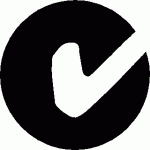After the initial excitement of generating an idea for a new Internet of Things device, there’s still countless design considerations to take into account – some of which you may not have even heard of. And a fair amount of these will be generated by the needs of specific markets around the world. So let’s consider some of the challenges involved in designing an Internet-of-Things device or appliance and bringing it to the global market.
What are some of the different factors that need to be taken into account when bringing a hardware device to market internationally? The need for multi-voltage off-line power supplies and multi-lingual product manuals are well-known things we’re used to with all our technology products – but with modern Internet-of-Things gadgets employing Internet connectivity, cloud computing and wireless radio-frequency mesh networks, there are some increasingly important factors to consider which may not be as familiar to the design team.
For mains-powered systems, international differences in mains voltage and frequency are an obvious factor to start with to ensure compatibility with the worldwide market. Modern switch-mode power supplies can easily be designed to span the possible worldwide voltage range between 100 V AC and 240 V AC without manual switching or configuration, at grid frequencies between 50 and 60 Hz. However, it should be remembered that the mains voltage is only assured within a tolerance of around plus or minus 10 percent, so an example of a good input voltage specification for a well-designed modern SMPS might be 85-265 V RMS AC at a grid frequency of 50-60 Hz. Extra attention is needed in systems where a clock or timebase is derived from the frequency of the AC grid – in systems of this sort, manual specification of the frequency may be required even if the power supply itself does not care about the AC frequency.
 When designing and deploying wireless sensor networks, Internet-of-Things networks and similar modern technologies where radio communication is used, attention also needs to be paid to differing international allocations of RF spectrum and licensing requirements for the use of the RF spectrum. Spectrum allocations and licensing requirements for Industrial, Scientific and Medical (ISM) bands differ between countries – for example, the 915 MHz band should not be used in countries outside ITU Region 2 except those countries that specifically allow it, such as Australia and Israel.
When designing and deploying wireless sensor networks, Internet-of-Things networks and similar modern technologies where radio communication is used, attention also needs to be paid to differing international allocations of RF spectrum and licensing requirements for the use of the RF spectrum. Spectrum allocations and licensing requirements for Industrial, Scientific and Medical (ISM) bands differ between countries – for example, the 915 MHz band should not be used in countries outside ITU Region 2 except those countries that specifically allow it, such as Australia and Israel.
A device that operates with a certain frequency spectrum and power level that requires no license, or falls into a class license, in one country may not be able to be legally operated in another country without specific operator licensing. For example, some devices operating in the 70 cm (433 MHz) spectrum that fall within the Low Interference Potential Device (LIPD) class license in Australia and hence can be freely operated cannot be used in the United States except by licensed amateur radio operators. The European Union’s Reduction of Hazardous Substances (ROHS) directive took effect in 2006, restricting the use of certain substances considered harmful to health and the environment, such as lead and cadmium, except in technological applications where elimination of these elements is not viable.
While RoHS compliance is not required for all electronic equipment sold throughout the world and is only strictly required for devices sold into the EU market, it is achieving widespread acceptance throughout the electronic manufacturing industry worldwide. However, in some specialised applications where extremely high reliability and resilience against factors such as tin-whisker formation is required, such as space and defence technology, these factors may take precedence over ROHS compliance and the use of lead-containing solder alloys and platings may be specified.
 Different testing organisations are responsible for setting and enforcing the standards for electrical safety and RF spectrum usage in different countries, and it can be challenging to keep track of the different testing requirements needed before bringing your product to market in every market country.
Different testing organisations are responsible for setting and enforcing the standards for electrical safety and RF spectrum usage in different countries, and it can be challenging to keep track of the different testing requirements needed before bringing your product to market in every market country.
For example, Underwriters Laboratories is well known in the United States for their role in drafting safety standards and providing compliance testing procedures for safety-related factors, whilst approval from the FCC is required to recognise compliance with RF spectrum and electromagnetic interference requirements – a completely separate thing to safety certification. And for another example, the TUV provides a similar role in the verification of safety-related standard compliance in the German market.
Other social and socio-economic factors that might not be as obvious can affect the user experience your product provides in different customer markets – for example, a device that constantly needs to “phone home” to an Internet-connected service may not function effectively in a country without widely available, or reliable, Internet access. In a situation like this, it may be beneficial to have a system designed to store and buffer its collected data locally on a storage device and only synchronise with an Internet service occasionally when connectivity may be available.
In conclusion, there’s a myriad of not only standards but also operational considerations to take in account when designing your next product for the global market. However don’t let that put you off – the greater the challenge, the greater the possible success. But if you’re not sure about testing, standards, compliance, markets abroad or any other factor – parter with an organisation that does: the LX Group.
Here at the LX Group we have the experience and team to make things happen. With our experience with connected devices, embedded and wireless hardware/software design, and ability to transfer ideas from the whiteboard to the white box – we can partner with you for your success.
We can create or tailor just about anything from a wireless temperature sensor to a complete Internet-enabled system for you – within your required time-frame and your budget. For more information or a confidential discussion about your ideas and how we can help bring them to life – click here to contact us, or telephone 1800 810 124.
LX is an award-winning electronics design company based in Sydney, Australia. LX services include full turnkey design, electronics, hardware, software and firmware design. LX specialises in embedded systems and wireless technologies design. https://lx-group.com.au
Published by LX Pty Ltd for itself and the LX Group of companies, including LX Design House, LX Solutions and LX Consulting, LX Innovations.

